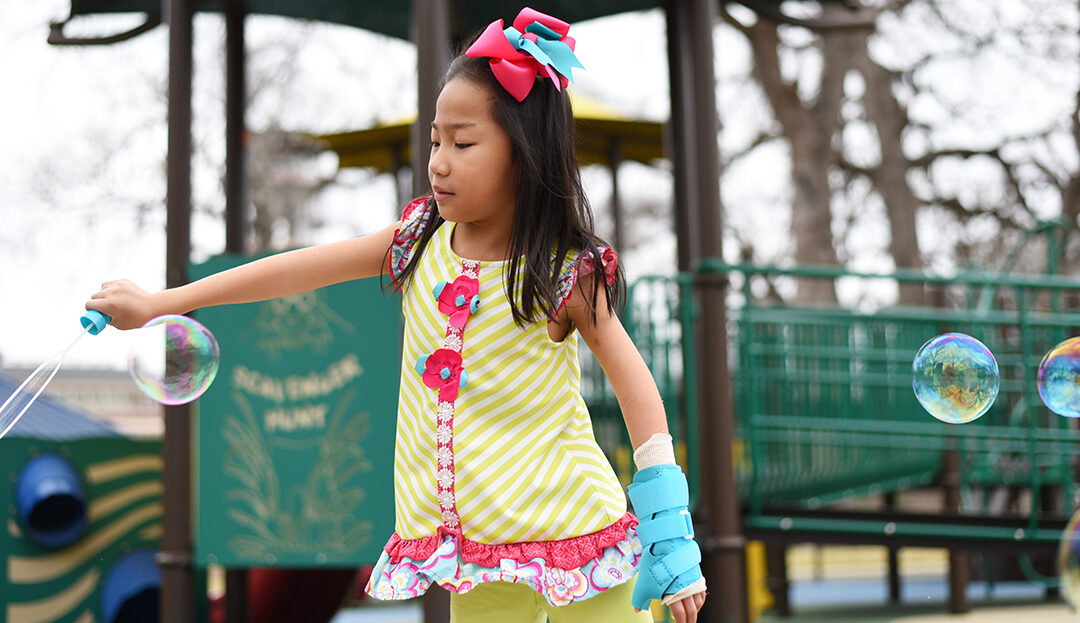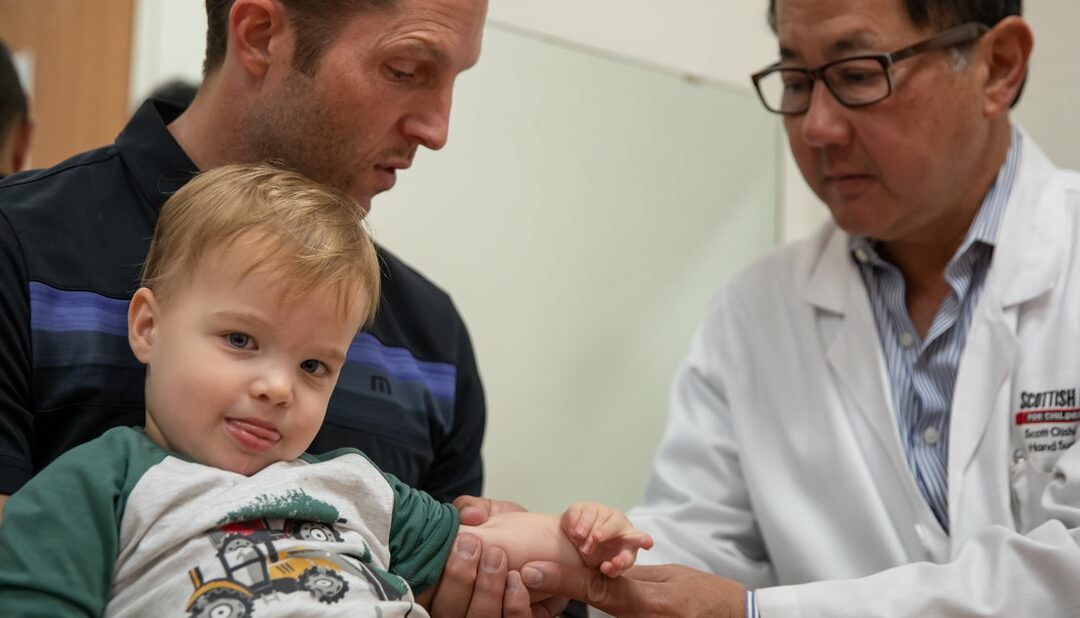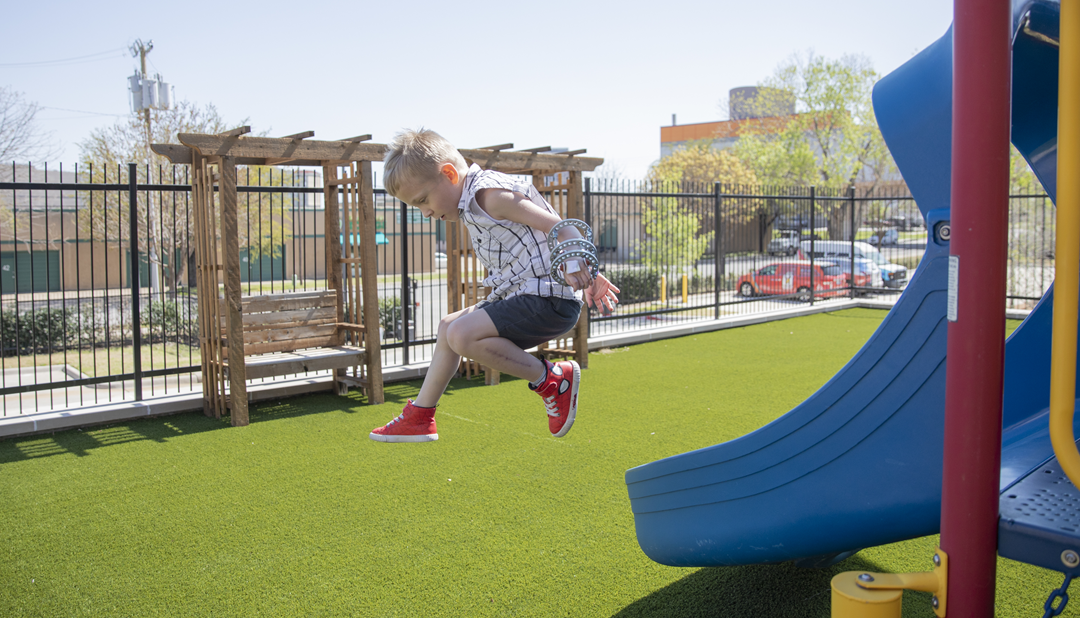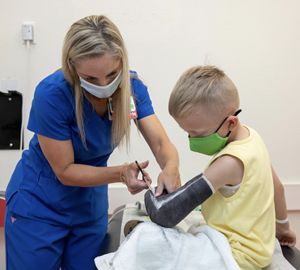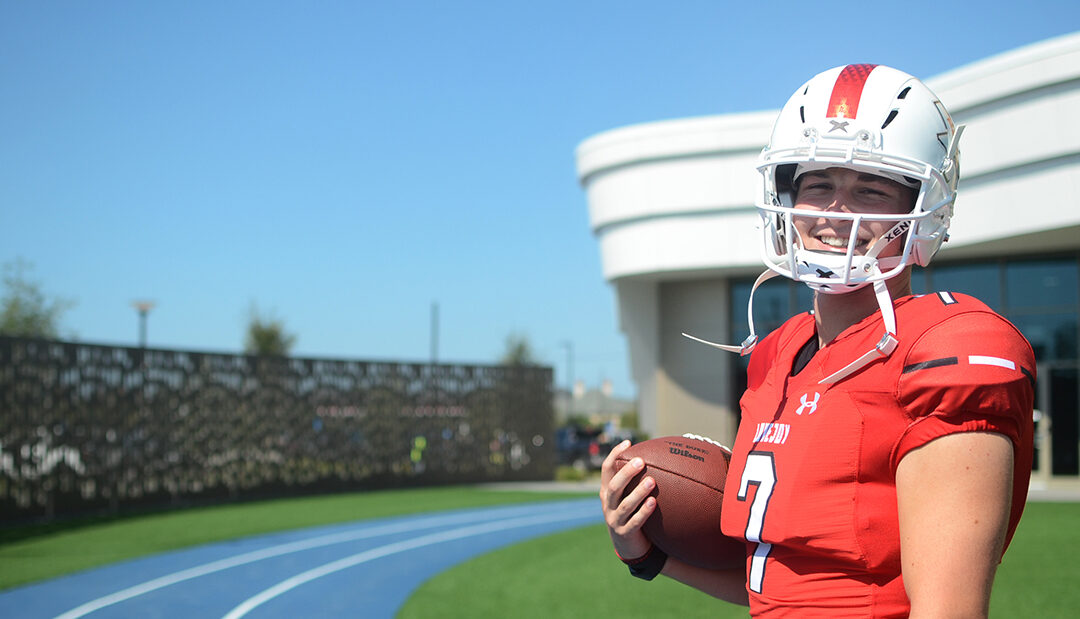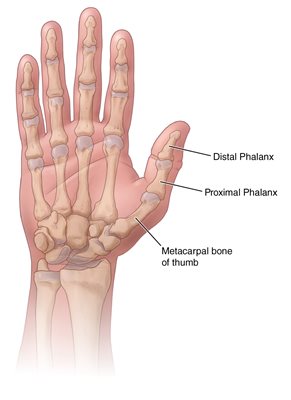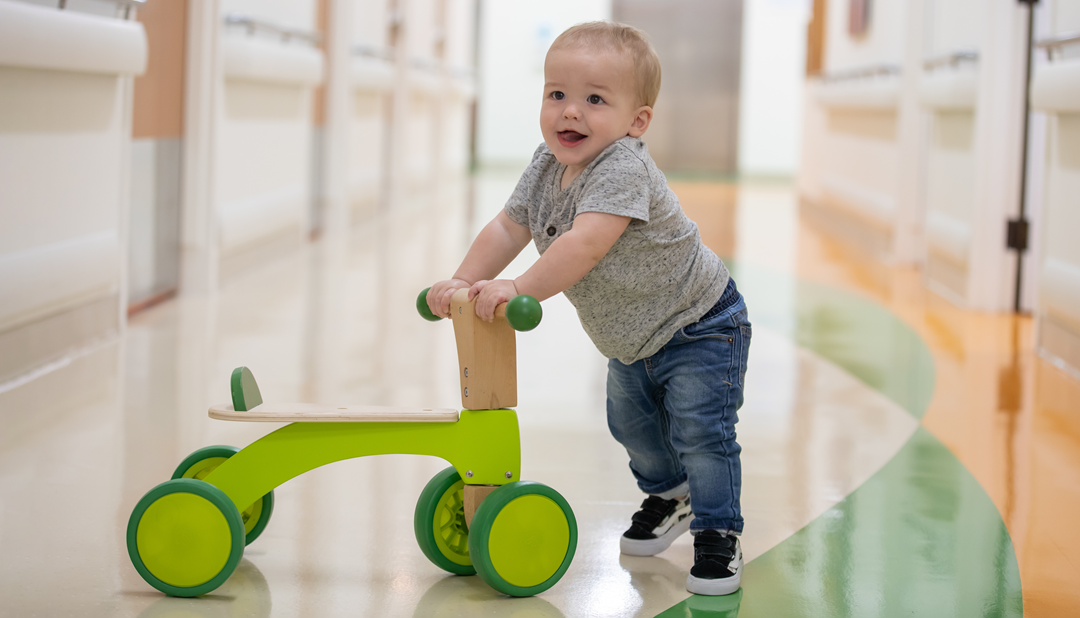
Expert Care for Extra Fingers and Toes
“Holden is very much the baby of the family,” says Ashley, his mother. “He likes being the center of attention and being constantly held. He’s also a little mischievous.” The youngest of three children, Holden, of Dallas, turned 1 in April and, according to Ashley, is into everything. “He’s in that ‘I now can get myself anywhere I want to be, so I’m going to explore anywhere I can’ phase,” she says. But, for the first nine months of his life, he could not wear a shoe on his left foot.
Holden was born with polydactyly, a condition in which a baby is born with extra digits. In Holden’s case, he had an extra pinkie finger on each hand and an extra toe on his left foot that sat on top of his other pinkie toe.
Ashley was prepared for the extra toe because her doctor had spotted it in her 20-week ultrasound. He said that they would have a pediatrician at her delivery who would put a clamp on it, and it would fall off like an umbilical cord. The two extra fingers were a surprise. “When Holden was born, the pediatrician said that given the number of extra digits and the way some of them were connected, they weren’t confident clamps would work,” Ashley says. Within 24 hours, they were referred to Scottish Rite for Children.
Hand surgeon Chris Stutz, M.D., evaluated Holden when he was just 3 weeks old. A leader in training hand surgeons from around the world, Scottish Rite was the first pediatric orthopedic facility in the nation to employ full-time hand surgeons. Dr. Stutz recommended surgery to remove the three extra digits at 9 months of age. The timing of surgery was scheduled late enough in Holden’s development to mitigate the risk of complication due to anesthesia and early enough to ensure that he could learn to walk.
“The idea of handing over your 9-month-old baby for surgery is terrifying,” Ashley says, “but it was so much easier knowing that he was with people who specialized in that.”
Holden came out of surgery with soft wraps on his hands and a hard cast on his foot. “As soon as the cast came off, we put him in a hard-soled shoe,” Ashley says. “His ability to stand and move around has been really great.”
“While this is a common procedure for our team, it is uncommon for the patient and family,” Dr. Stutz says. “We were happy to provide the comfort, confidence and expertise for this wonderful, sweet family.”
“We loved our Scottish Rite experience,” Ashley says, “and we’re glad that Holden can move on with being a 1-year-old who can wear shoes!”

